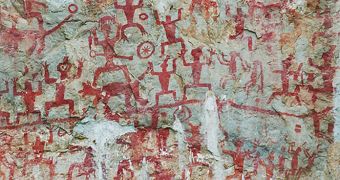China is a nation that has an enormous amount of respect for its traditions and history, some of which can be found in the thousands of impressive archaeological sites the country has. In the developed world, the most important works of ancient art, regardless of whether they were carved in stone or painted on statues, modern technologies are used to preserve nations' heritages. But Chinese experts lack training and the necessary computer skills to do the same in their country, and this is why they have now turned to American colleagues for assistance.
The Asian nation's rich and glorious past saw a huge number of inventions, including countless things we take for granted today. These include the compass, the bell, gunpowder, printing press, paper, the fork, the use of salt as a food additive and so on. All of these discoveries, as well as some of the most important moments in the country's ancient history (and prehistoric times), can be found in the walls of caves, and on impressive monuments. However, all of these sites are exposed to the effects the passage of time has on all things, and so authorities in Beijing are willing to take whatever step necessary to preserve this heritage for future generation.
US researchers from the Arizona State University (ASU) are now a part of the national effort to digitalize ancient art. The experts, based at the ASU College of Liberal Arts and Sciences (CLAS) School of Human Evolution and Social Change, and led by professor Michael Barton, are a part of The Chinese Rock Art Recording and Exchange Project. The initiative is aimed at recording rock art throughout China, and transpose it in a digital format that would ensure its survival. Just recently, the ASU group hosted a technological workshop in the Ming River region of southern China, with the purpose of instructing local Chinese archaeologists on the technique available for art preservation.
“The archaeologists who attended our workshop were not aware that any of these technologies even existed. They were excited to discover Google Earth and similar technologies that are being used by today’s archaeologists,” Barton says. “We were able to show the participants that it is possible to archive their archaeological findings using current technologies, and we showed them the tools to do it. We did some good here by helping people who want to protect their cultural heritage. We demonstrated techniques that they can start to use immediately with open source software that’s available in Chinese, free of charge and can be adjusted to fit their needs,” says Barton, who is also the director of the ASU Center for Social Dynamics and Complexity.

 14 DAY TRIAL //
14 DAY TRIAL //